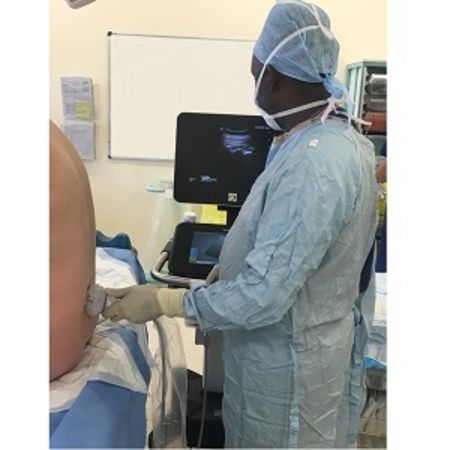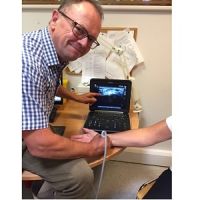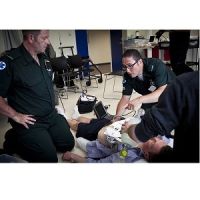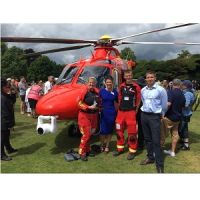SonoSite’s X-Porte helps Dr Abraham Ssenoga to administer epidurals under ultrasound guidance.
Anaesthetists at Liverpool Women’s Hospital are taking advantage of ultrasound guidance to administer epidurals, as consultant anaesthetist Dr Abraham Ssenoga explained: “Liverpool Women’s is a specialist obstetrics and gynaecology hospital that deals with around 8,000 deliveries a year. Of these, about 25 % of patients will require an epidural, either during labour or for an elective C-section.”
“We purchased an X-Porte® point-of-care system last year to use for ultrasound-guided epidurals. Its large screen appealed to us and, with no buttons to trap dust, the system is easy to keep clean. The touchscreen operation is especially popular with younger staff, who are used to smartphone and tablet technology, and the image quality is excellent. A particular advantage is the capability to change the mode according to the size of the patient, making it easier to obtain a clear image and measure depth accurately, enabling the correct needle length to be selected first time; the improved accuracy of needle placement means that it does not require several attempts to administer the anaesthetic. Administering an epidural to a patient with anatomical problems, where the landmarks are not clear, is also challenging, and this is another situation where ultrasound guidance is extremely beneficial. There is no doubt that ultrasound-guided needle placement is better for the patient and, now that the technique has gathered momentum, some patients are actually asking ‘Will you be using ultrasound to place my epidural?’”
Source & Image Credit: Sonosite



























